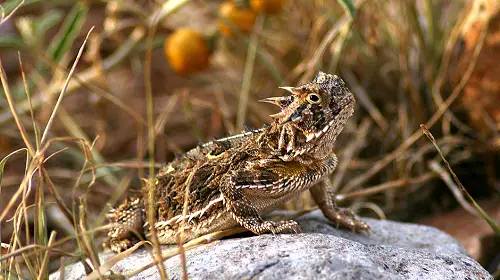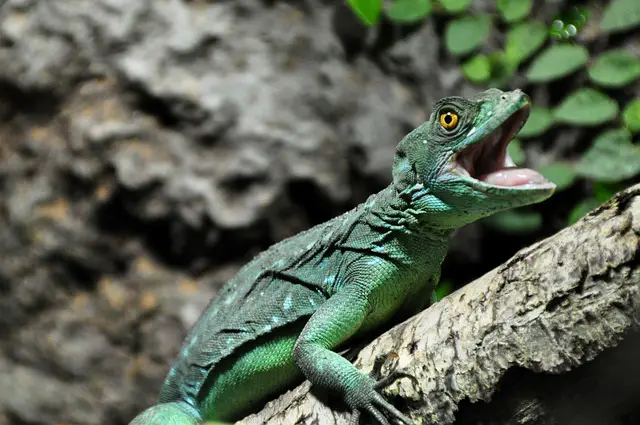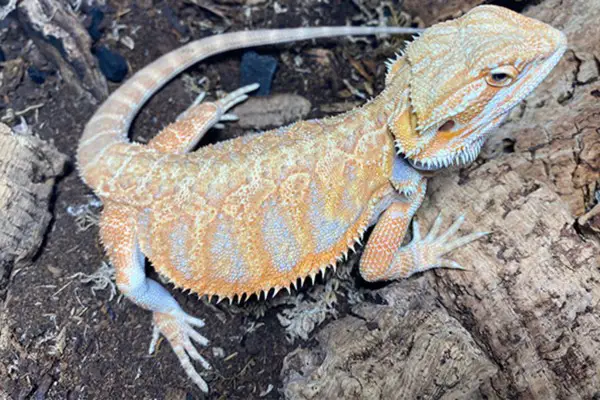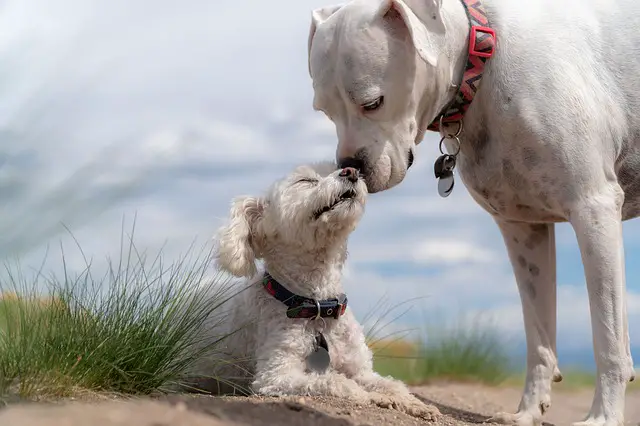The Texas horned lizard (Phrynosoma cornutum) is a North American lizard with a spiky body. It is found in the southeastern Arizona, Kansas, Colorado to as far south as northern Mexico. The horned lizard is also called horned toad. It can disappear its body into the dry vegetation as the body provides an excellent camouflage to blend with the brownish background.
Texas Horned Lizard Facts
Anatomy
- The brown spiny body serves as an absolute camouflage so much so that it becomes difficult for the predator to spot it especially when the lizard stands motionless.
- They have got unique hornlike spines which is what earns its name.
- The Texas horned lizard is mainly recognized by the black spots on the back.
- Depending on the temperature, the lizard’s body sometimes shows yellowish to reddish tint body.
- Adult lizards average 3 in long (7.6 cm) in body length.
Range & Habitat
- Texas horned lizards are thought to occupy the west-central United States including Colorado, Arizona, and Kansas. They are also found in the northern Mexico.
- The lizard makes homes in sparsely vegetated or dry areas.

Behavior
- Horned lizards are typically diurnal species.
- One of its defensive techniques is that the lizard can squirt blood from its eyes. The horned lizard also releases blood when it sheds the skin.
- Apart from discharging blood the Texas horned lizard also inflates its body or erects the horns to threaten the predator.
- Texas horned lizards are likely to produce a hissing sound.
- The lizard prefers to survive at temperatures of about 101o
- It lies motionless on the ant’s trail and capture it right the ants approach.
- They will spend many hours taking sunbath—an adaptation to raise the body temperature.
- During winter in October they go into hibernation phase.
Feeding Ecology & Diet
- Texas horned lizards rely almost exclusively on ants but they do eat other many ground-dwelling arthropods including beetles, harvester ants (red ants), and spiders.
- Horned lizards will consume as many as 70 ants a day. Generally they will avoid larger colonies of ants because if they won’t they would be hunted rather than hunter.
- They drink water through the scales that absorbs enough raindrops on the skin. These scales then channel the water to the mouth.
- Lizards also get water by licking dew vegetation.
Reproductive Biology
- The breeding season occurs in spring during which the females lay as many as 24 – 36 eggs.
- A female deposits eggs into the 6 in (15.2 cm) deep burrow. Later she covers the eggs with sand.
- The hatching period ranges from July to early August.
Conservation Status
- The International Union for the Conservation of Nature (IUCN) has not yet listed the Texas horned lizard. It is beginning to disappear in all the major habitats and has listed as threatened species by the State of Texas.








